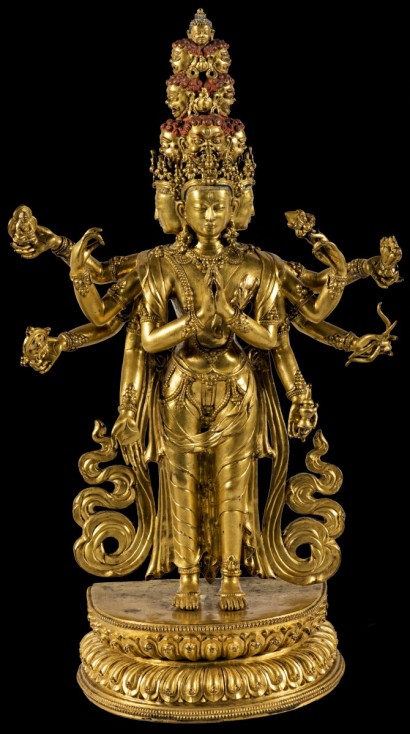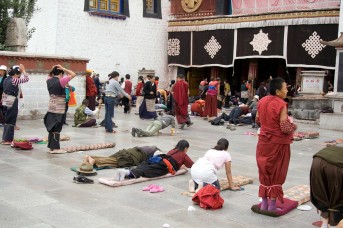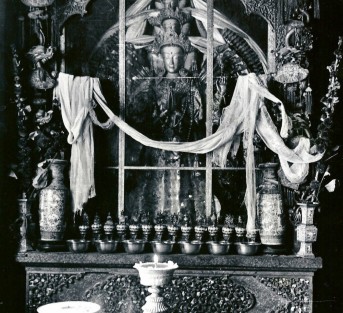Tibet or China, 17th–18th century; gilded bronze; 15 15/16 x 9 1/2 in.; Jacques Marchais Museum of Tibetan Art, 85.04.0160.
The Eleven-headed Avalokiteshvara is a popular tantric form of the bodhisattva. In this example, three crowned heads serve as a base; wrathful faces form the three upper tiers, with Amitabha’s head topping them all. These amplifications of the bodhisattva’s power scan the world in all directions and offer multiple means for alleviating suffering.
This work replicates a sacred icon found in Lhasa’s Jokhang Temple. Legend recounts that King Songtsen Gampo had a vision of a Ten-armed and Eleven-headed Avalokiteshvara, which then miraculously appeared as a clay statue. The icon is said to contain the essence of the king, who is considered an emanation of the bodhisattva. Over centuries, many Tibetans have made pilgrimages to venerate this sculpture. CZ







